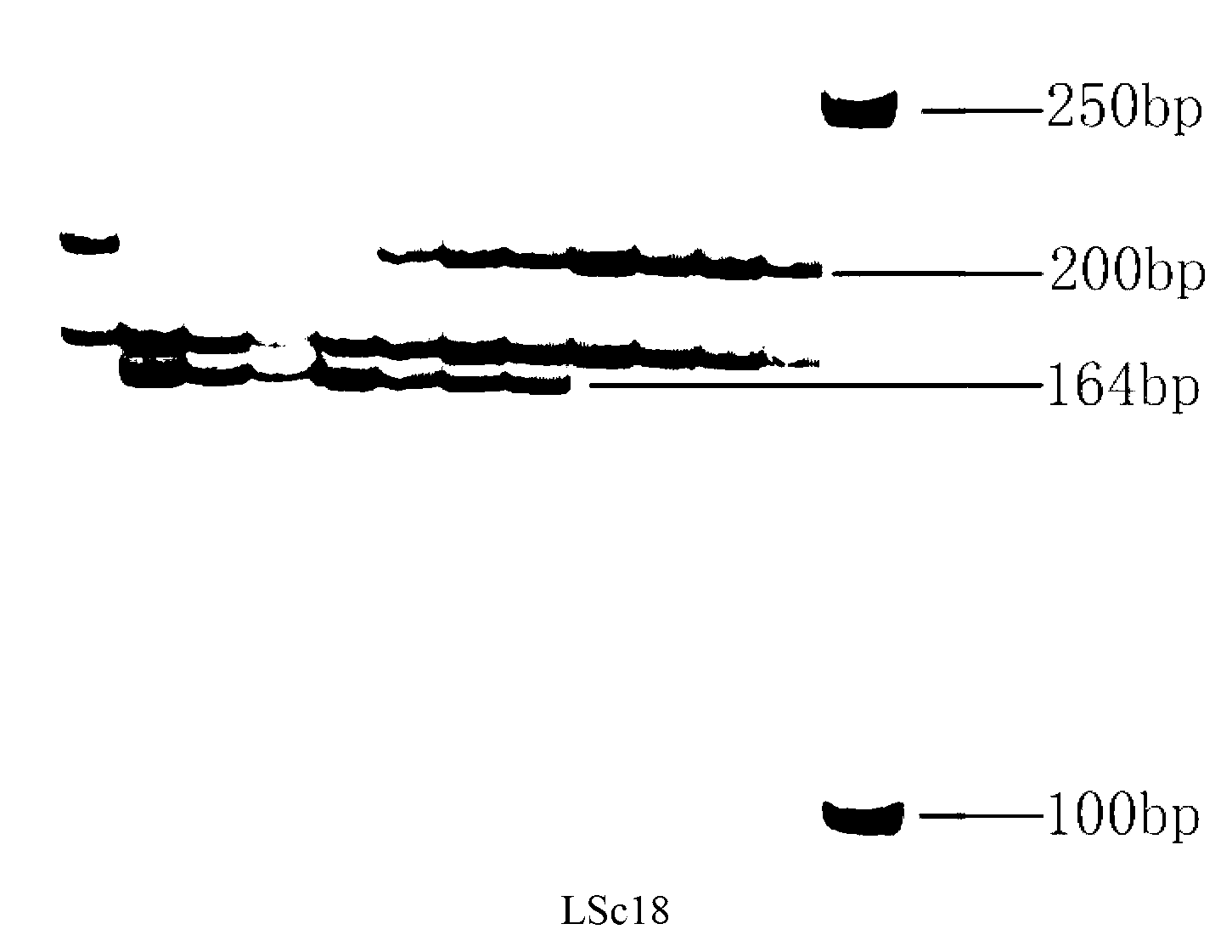Wheat EST (expressed sequence tag) sequence, molecular marking for stripe rust-resistance property, and application
A technology for stripe rust and wheat, which is applied in the field of crop breeding and molecular genetics, can solve the problems of lower accuracy rate, influence of resistance gene breeding, inability to eliminate self-defects, etc., and achieve reliable detection, optimal annealing temperature and annealing effect
- Summary
- Abstract
- Description
- Claims
- Application Information
AI Technical Summary
Problems solved by technology
Method used
Image
Examples
Embodiment 1
[0055] This example describes a molecular marker method in which the target sequence contains the wheat EST sequence JK972238-94, which is based on PCR for EST markers.
[0056] 1. Unidentified wheat materials
[0057] Wheat stripe rust-resistant line L693 (it was identified that this material carries a dominant gene controlling stripe rust resistance) and susceptible line L661 were germinated indoors, and when the plants grew to the three-leaf stage, they were treated with stripe rust. The physiological race "Tiaozhong 32" was inoculated by smearing method to induce the expression of resistance gene ( figure 1 ).
[0058] 2. Extraction of total DNA from wheat materials to be identified
[0059] 24, 48, and 72 hours after inoculation, the leaves of disease-resistant and susceptible materials were taken and stored at -80°C, and the sampled leaves were ground to powder with liquid nitrogen, and the total DNA of wheat materials was extracted according to the CTAB method.
[00...
Embodiment 2
[0071] This example describes a method for identifying resistance to wheat stripe rust.
[0072] The amplified products obtained in Example 1 were compared with their corresponding standard target sequences, and if the amplified products were consistent with the length of the standard target sequence (see Table 1), the strain of wheat contained stripe rust resistance genes, and should show resistance to stripe rust. stripe rust traits; on the contrary, it means that the single wheat plant does not contain the stripe rust resistance gene and should be susceptible to stripe rust.
[0073] figure 2 shown. Identification of F in wheat material L693×L661 using co-isolated primer LSc18 2 The length of the amplified product of the wheat single plant containing the stripe rust resistance gene was 164bp, while that of other wheat single plants not containing the stripe rust resistance gene had no such amplification product. L693×L661F 2 Population expansion such as figure 2 , th...
PUM
 Login to View More
Login to View More Abstract
Description
Claims
Application Information
 Login to View More
Login to View More - R&D
- Intellectual Property
- Life Sciences
- Materials
- Tech Scout
- Unparalleled Data Quality
- Higher Quality Content
- 60% Fewer Hallucinations
Browse by: Latest US Patents, China's latest patents, Technical Efficacy Thesaurus, Application Domain, Technology Topic, Popular Technical Reports.
© 2025 PatSnap. All rights reserved.Legal|Privacy policy|Modern Slavery Act Transparency Statement|Sitemap|About US| Contact US: help@patsnap.com



